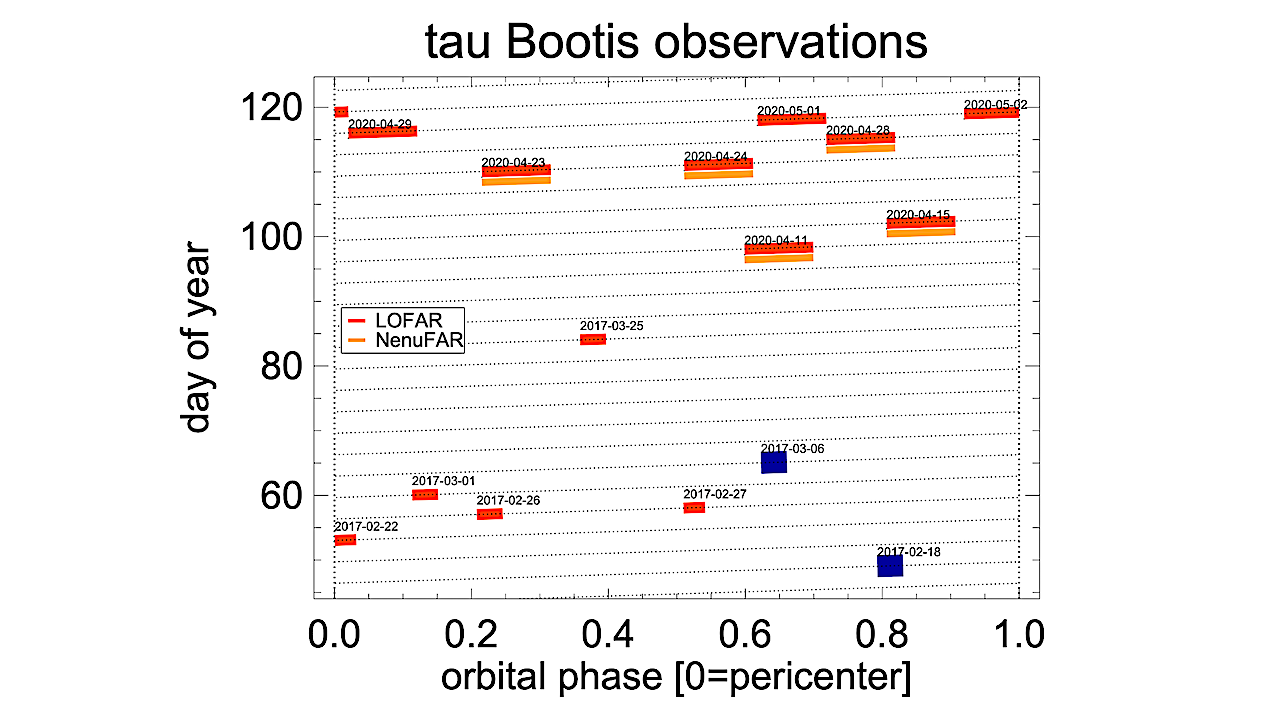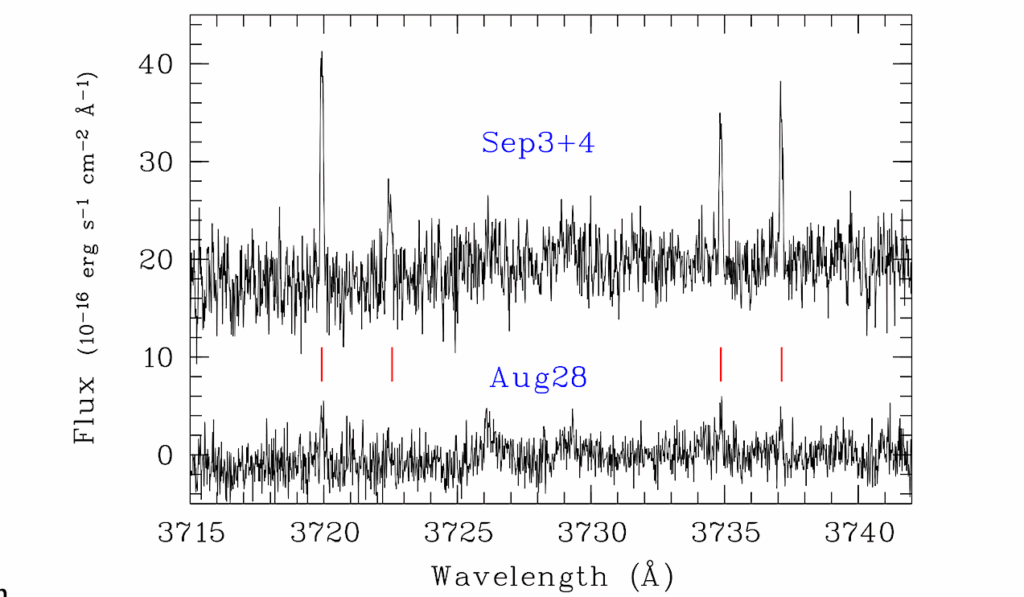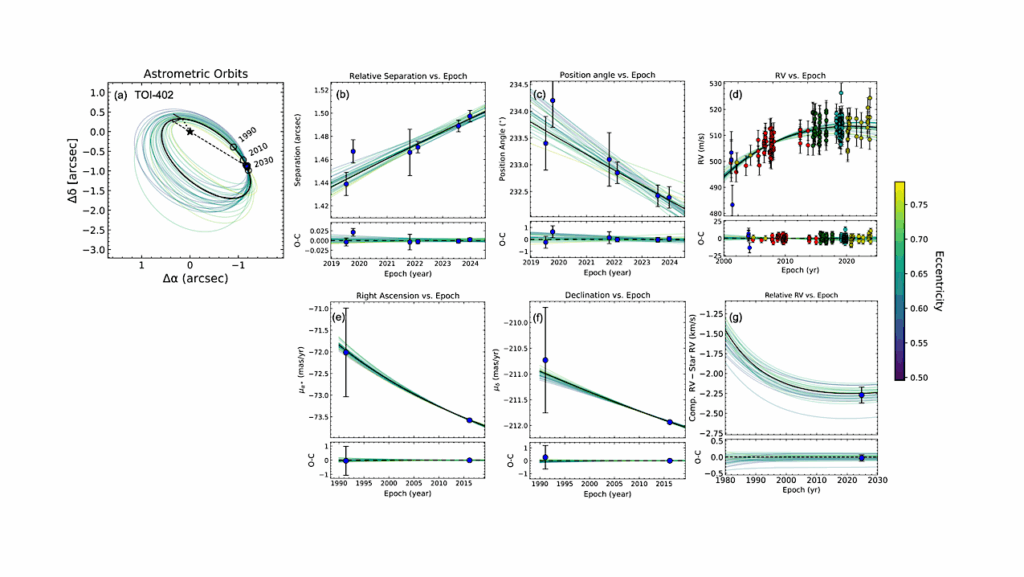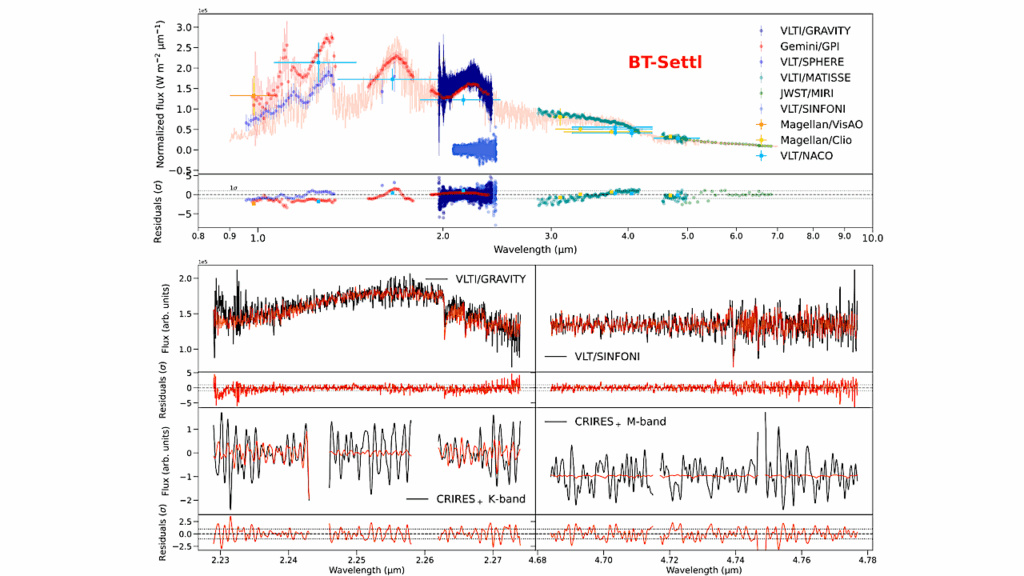Follow-up Radio Observations Of The τ Boötis Exoplanetary System: Preliminary Results From NenuFAR

Studying the magnetic fields of exoplanets will provide valuable information about their interior structures, atmospheric properties (escape and dynamics), and potential habitability.
One of the most promising methods to detect exoplanetary magnetic fields is to study their auroral radio emission. However, there are no confirmed detections of an exoplanet in the radio despite decades of searching. Recently, Turner et al. 2021 reported a tentative detection of circularly polarized bursty emission from the τ Boo exoplanetary system using LOFAR low-frequency beamformed observations. The likely source of this emission was presumed to be from the τ Boo planetary system and a possible explanation is radio emission from the exoplanet τ Boo b, produced via the cyclotron maser mechanism.
Assuming the emission is from the planet, Turner et al. 2021 found that the derived planetary magnetic field is compatible with theoretical predictions. The need to confirm this tentative detection is critical as a conclusive detection would have broad implications for exoplanetary science. In this study, we performed a follow-up campaign on the τ Boo system using the newly commissioned NenuFAR telescope in 2020. We do not detect any bursty emission in the NenuFAR observations. There are many different degenerate explanations for our non-detection.
For example, the original bursty signal may have been caused by an unknown instrumental systematic. Alternatively, the planetary emission from τ Boo b is variable. As planetary radio emission is triggered by the interaction of the planetary magnetosphere with the magnetized stellar wind, the expected intensity of the planetary radio emission varies greatly with stellar rotation and along the stellar magnetic cycle. More observations are needed to fully understand the mystery of the possible variability of the τ Boo b radio emission.
Jake D. Turner, Philippe Zarka, Jean-Mathias Griessmeier, Emilie Mauduit, Laurent Lamy, Tomoki Kimura, Baptiste Cecconi, Julien N. Girard, L.V.E. Koopmans
Comments: 12 pages, 4 figures, 3 tables. Accepted for publication (Sept 4, 2023) for the Planetary, Solar, and Heliospheric Radio Emissions IX Proceedings. Refereed by 2 referees
Subjects: Earth and Planetary Astrophysics (astro-ph.EP); Instrumentation and Methods for Astrophysics (astro-ph.IM)
Cite as: arXiv:2310.05363 [astro-ph.EP] (or arXiv:2310.05363v1 [astro-ph.EP] for this version)
Submission history
From: Jake Turner
[v1] Mon, 9 Oct 2023 02:49:21 UTC (4,040 KB)
https://arxiv.org/abs/2310.05363
Astrobiology,








